|
-

-
this booklet is offered
as a public service of the
-
BOARD OF TRAVEL
AND TOURIST INDUSTRY
-
Republic of the Philippines
|
| art in wood |
|
|
- art is expressed in many forms ... in ballet, painting,
music ... in any reflection of beauty and grace.
-
- The carving of wood is one
of the oldest forms of art known to man. In this particular art
form the Philippines has achieved world acclaim. Therefore, it
was only natural in planning the Philippine Pavilion at the New
York World's Fair to turn to the skilled woodcarvers in the town
of Paete in Laguna Province for the execution of the wood murals
that are featured in the Pavilion. Designed by muralist Carlos
V. Francisco, these carvings, which are described in this brochure,
trace the history, culture and rich heritage of the Filipino.
-
- It is hoped that this inspiring
exhibit of art in wood will provide Fair visitors with the opportunity
to see this unique art form as interpreted by the Filipino and
more importantly, help them know better their thirty million
friends from the island archipelago that is the Republic of the
Philippines.
|
|
|
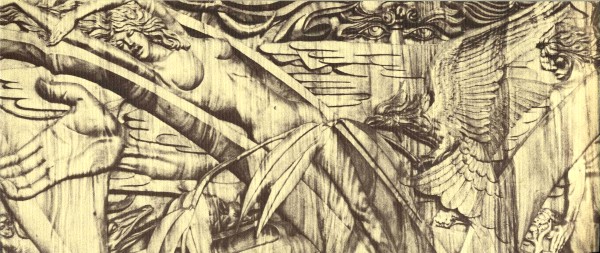
|
- "malakas at maganda" "In
the beginning of Time, there was only the blue sky above, and
the green sea below dotted here and there by islands filled with
lush vegetation ... and flying about was a magnificent, black
bird called the tigmamanukin.
-
- "While resting on a
bamboo thicket one day, the great bird heard an unusual noise
coming from within a large bamboo stalk. In curious concern,
the bird pecked on the stalk, the bamboo split in two, and lo!
from one hollow side emerged a handsome and powerfully-built
brown man, and from the other side a beautiful brown maiden.
-
- "The man addressed the
woman as Maganda (Tagalog word for 'beautiful') and she,
in turn, called him Malakas (meaning 'strong'), and this
is how they came to be known.
-
- "Shortly thereafter
and with the approval and blessing of Bathala, the god-creator
of all, Malakas took Maganda for his wife and their
children and grand-children and other generations that followed
peopled the country now known as the Republic of the Philippines."
|
|
|
|
|
|
- the malay migrations The Malays were not the first people
in the Philippines. Aetas, and a scattering of pygmy tribes
now almost extinct, already inhabited the country when the Malay
migrations began.
-
- Recorded history tells of
a fleet of fast-sailing binidays (outriggers) comprising
well-organized barangays (village communities) of some
ten brave datus (tribal chieftans) from neighboring Borneo
who, in the 13th century, fled their native land to escape the
tyranny of Mukatunaw, their sultan. They landed in Panay, westernmost
island in the Visayan region that comprises the central area
of the archipelago, where they settled. Shortly thereafter, other
migratory waves from Borneo followed which accounts for the Malay
racial stock of present-day Filipinos who now number well over
30 million.
|
|
|
|
|
- code of kalantiaw Unknown and unpublicized is the fact
that, long before Europe made its first contact in the Philippines,
the country and its people enjoyed a fairly advanced civilization
of its own.
-
- One of the wisest and most
beloved rulers during the 13th century was Kalantiaw,
who instituted a code of laws for the members of his barangay
in the island of Panay.
-
- Generally conceded as more
humane than the Code of Hamurabi, the Code of Kalantiaw
provided penalties for such unlawful acts as killing, stealing,
sacrilege, and disrespect for the aged and persons of authority.
|
|
|
|
|
- battle at maktan A Spanish expedition under the command
of Ferdinand Magellan, a Portuguese-born navigator, came upon
the Philippines in 1521 in the course of a voyage in search of
the Spice Islands. Magellan claimed the islands for Spain.
-
- Little did Magellan fancy
that the golden-brown-skinned natives were fierce fighters in
the defense of their freedom, and the Battle at Maktan is one
of the most dramatic and historic episodes in the history of
the Philippines, testifying as it did to the bravery and heroism
of its people.
-
- Maktan is a small island
off the eastern coast of Cebu in the Visayan region. As Magellan
and his helmeted warriors attempted to subdue the islanders,
Rajah Lapulapu led his valiant men in a spirited combat against
the superiorly-equipped Spanish forces. Magellan was slain by
Lapulapu and the invaders lost the battle.
-
- (The expedition's remaining
ship, the Victoria, returned to Spain in 1522 under Sebastian
El Cano. It was the first ship to circumnavigate the globe.)
|
|
|
|
|
- conquest of maynilad Spanish defeat at Maktan did not discourage
subsequent expeditions to the archipelago named after Philip
II. Cebu was taken in 1565 and soon after, other islands also
fell to Spanish arms.
-
- In 1570 the conquistadors
sailed north to the rich port of Maynilad but it was not until
the following year -- and only after a long and heroic resistance
by its people -- that the Spanish forces won. Maynilad's great
king, Rajah Soliman, died fighting off the invaders.
-
- After its conquest, the port
was organized into a city by Miguel Lopez de Legaspi, renamed
Manila, and proclaimed capital of the Islas Filipinas.
Legaspi became the first Spanish governor of the country.
-
- An unsuccessful invasion
attempt by Chinese forces led by Limahong resulted in the building
of a massive wall around Manila, with a moat around it similar
to those of European medieval cities.
-
- (The one-mile square area,
known popularly as Intramuros, which is Spanish for "within
walls," was razed to the ground during the Battle for the
liberation of Manila in World War II, and the ancient walls were
destroyed.)
|
|
|
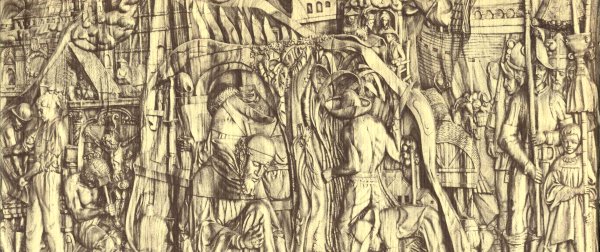
|
- the sword and the cross
The administration
of Spanish rule over the island-archipelago was shared jointly
by the Office of the Governors-General appointed by the Crown
of Spain, and the Church. Thus came into being the popular reference,
"The Rule of the Sword and the Cross."
-
- Three centuries of this rule
witnessed the birth of towns and cities from native barangays;
the building of public offices, market centers, fountain-centered
plazas, bridges and roads; the establishment of hospitals, orphanages,
asylums as well as grammar schools and colleges; and the start
of a more advanced social system.
-
- Above all, the native population
was Christianized. And the Philippines remains, to this day,
the only Christian country in Asia.
|
|
|
|
- period of oppression The 333-year rule of Spain over the
Philippines failed to obtain full and voluntary submission from
the Filipinos.
-
- Outwardly, there was a show
of humility and respect for authority. But the yoke of oppression
became gradually heavier and more unbearable.
-
- Protest against forced labor,
abusive treatment by both civil officials and friars, and other
offenses to the dignity of man resulted in revolts led by patriots
such as Dahohoy, Palaris, Tamblot and Diego Silang. But these
uprisings failed due to lack of concerted actions on the part
of the rebels.
|
|
|
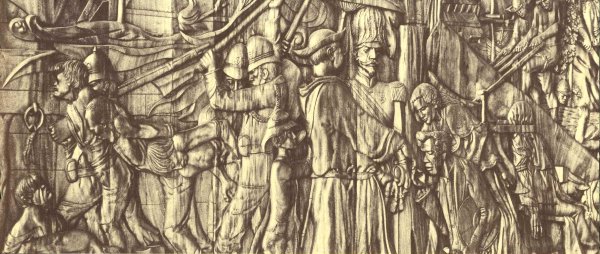
|
|
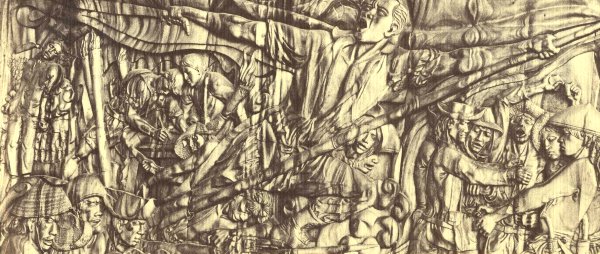
|
- the philippine revolution
The year 1896 marked
a turning point in the history of the Philippines. Inspired by
the now-immortal writings of Dr. Jose P. Rizal, Emilio Jacinto,
Marcelo H. de pilar, Graciano Lopez Jaena, Antonio Luna, Dr.
Pedro A. Paterno, Mariano Ponce, Dr. Pio Valenzuela and other
Filipino intellectuals, the nation rose as one in fiery and determined
rebellion against tyranny.
-
- The immediate cause of the
Revolution was the discovery by the Spanish authorities of the
Kataastaasan Kagalanggalangang Katipunan Ng Mga Anak Ng Bayan
(Highest and Most Respected Association of the Sons of the Country),
often referred to simply as the Katipunan. It was organized
in 1892 by Andres Bonifacio as a secret revolutionary society;
its birth and rise signalized the end of a long crusade to secure
reforms from Spain by means of a peaceful propaganda. Its discovery
on the night of August 19, 1896 resulted in a stormy meeting
of the Katipuneros in the hills of Balintawak north of
Manila. Bonifacio took out his cedula certificate, a symbol
of vassalage, and tore it to pieces. Everyone followed suit amid
shouts. This was the so-called "Cry of Balintawak"
which reverberated throughout the land.
-
- When Spanish authorities
in the Philippines ordered and carried out the execution of Rizal
-- who had lived in exile since 1892 and had not taken part in
the armed uprisings -- the Revolution surged to greater fury.
Historians state: "Spanish bullets destroyed Rizal but his
ideas destroyed the Spanish empire in the Orient." Dr. Rizal
is regarded as the foremost hero and patriot of the Filipino
people.
|
|
|
|
|
|
- battle at tirad pass The victory of Commodore Dewey and
his American warships at Manila Bay (May 1, 1898) sounded the
death-knell of Spanish rule over the Philippines. And from the
ruins of the Filipino Revolution against Spain (1896-98) arose
the First Philippine Republic, with a proclamation of independence
held amid solemn rites at Kawit, Cavite.
-
- Led by the belief that the
United States would recognize the independence of the country,
General Emilio Aguinaldo rallied his people to the siege of Manila
by Filipino and American forces on August 13, 1898 and before
the day was over the white flag of surrender was hoisted from
behind the city walls.
-
- But in the Treaty of Paris
signed on December 10, 1898, Spain ceded the Philippines to the
U.S. The Filipino people protested bitterly against the Treaty
and, shortly after the Republic was inaugurated in Malolos, Bulacan
on January 23, 1899, hostilities between the Filipinos and Americans
broke out.
-
- A stirring episode during
this Filipino-American War was the Battle at Tirad Pass, in the
province of La Union. A 23-year-old Filipino-Brigadier-General,
Gregorio H. del Pilar, with only 60 soldiers under his command,
died fighting the American troops led by General Frederick March.
Of the gallant hero, the Americans said: "He died a great
officer and gentleman."
|
|
|
|
|
- a commonwealth government
... then war! Thirty-seven
years after the acquisition of the Philippines by the United
States, a Commonwealth Government was organized in preparation
for the return of Philippine independence in 1946. Veteran Filipino
statesman Manuel Luis Quezon was the people's choice for President.
-
- But in December 1941 the
Pacific War broke out and the country, still ill-prepared for
invasion and armed conflict, soon fell under the might of the
Japanese forces.
-
- The gallant stand of Filipino-American
troops in Bataan and Corregidor after all of East Asia had fallen
into enemy hands will forever be remembered. This heroic stand
in a hopeless situation gave enough time for the evacuation to
Australia and thence to the U.S., of General Douglas MacArthur
and President Quezon. The flight was a matter of military expediency
and political significance, and history has borne this out.
-
- Nor will anyone forget the
infamous "Death March." About 36,000 prisoners of war
-- hungry, thirsty, fatigued, diseased and dying -- were forced
to march from Bataan to Pampanga. Those unable to walk further
were brutally beaten or bayoneted to death. But the handful of
survivors gave testimony, once more, to Man's determination to
live for freedom. And the courage of the Filipino shone in his
darkest hour.
|
|
|
|
|
- liberation at leyte and
the rebirth of a republic On
October 20, 1944 an invasion fleet of 650 American ships sailed
into Philippine waters off the eastern coast of Leyte. After
the first wave of assault had made a beachhead at Palo, General
Douglas MacArthur waded ashore. He had fulfilled his now-famous
pledge to the Filipino people: "I shall return!"
-
- MacArthur was accompanied
by Filipino leaders headed by president Sergio Osmena (successor
to Quezon, who had died only a few months before). Three days
later the Commonwealth Government was reestablished and shortly
thereafter the last national election held under the Commonwealth
regime witnessed the ascendancy of Manuel A. Roxas to the Presidency.
-
- On July 4, 1946 the United
States, in keeping with its promise, withdrew its "trusteeship"
over the Philippines. Amid solemn and impressive ceremonies,
the proclamation of Philippine independence issued by President
Harry S. Truman was read by American High Commissioner Paul V.
McNutt. The Philippine national anthem was played as the Filipino
flag was hoisted alone at last under sunny skies. Manuel A. Roxas
was inducted into office, the first President of the Republic
of the Philippines just reborn.
-
- All these took place at the
Luneta Park where, under the darkness of dawn 50 years earlier,
volley shots from a firing squad snuffed out a young patriot's
life, but not his fondest dream.
|
|
|
|
|
- the republic marches on
The expedient physical
reconstruction of the Philippines, war-torn and economically
dislocated, reflects the indomitable spirit of the Filipino.
Presidents Manuel Roxas and Elpidio Quirino contributed greatly
towards the implementation of the country's program of post-war
economic rehabilitation. Presidents Ramon Magsaysay and Carlos
Garcia added their own efforts to the task of rebuilding the
nation.
-
- Today, as the Republic of
the Philippines begins its 18th year of life, the herculean responsibility
of leadership rests on the shoulders of young, vigorous and resourceful
President Diosdado Macapagal whose new socio-economic program
envisions even greater improvement in the agro-industrial life
of the country and a healthy and happy citizenry.
-
- A progressive educational
system with one fifth of the population in school; a high degree
of literacy and the freest press in Asia (possibly in the world);
advanced public health, continued hospital-building, and thousands
of highly-competent surgeons, physicians and nurses; a growing
tourist industry and new public highways; new and bigger industrial
enterprises ... these, and a free representative government that
is the bastion of democracy in Asia, are among the many blessings
enjoyed by the Republic of the Philippines as it marches on.
|
|
an 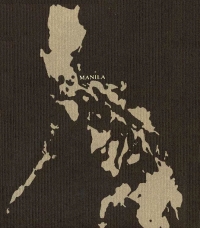 |
 invitation
invitation |
- Whatever it was in the past that lured people to travel,
the fact remains that today people travel because of their deeper
interest in their fellow human beings.
-
- More than ever before, they
cover greater distances and visit places they have barely heard
of. And in the adventuresome process they acquire a broader and
exciting knowledge of other peoples, of their foods and festivals,
their customs and traditions, their art and folklore.
-
- Among the peoples of the
world who offer the traveler a discovery of a different and exciting
way of life are the Filipinos. Their country, an archipelago
of 7,107 islands and islets, lies at the air and sea crossroads
of the Orient. It is a natural destination for today's traveler
coming from Europe, and a veritable gateway to the fabled lands
in the exotic Far East for those crossing the blue Pacific.
-
- The country itself offers
spectacular scenery: forests of wild orchids, volcanic lakes,
enchanting waterfalls. It offers tourist attractions found nowhere
else: the magnificent centuries-old, man-made rice terraces scaling
the Banaue mountains, historic Corregidor, the mountain city
of Baguio, Tagaytay, overlooking Lake Taal and Taal Volcano,
Cebu, "Queen City of the South" and the colorful Muslim
region of Zamboanga on the island of Mindanao.
-
- But more important, the Philippines
offers its own people -- 30 million friendly people known the
world over for their warmth and hospitality. If for no other
reason than to meet the Filipino, the modern traveler owes it
to himself to visit the Philippines. The experience couldn't
be more rewarding.
|
|

-
-
-
-
-
- Prepared and Edited by the
- Philippine Travel Information
Office
- New York City
-
|
Source: Souvenir
Brochure and Pavilion Guide to the Philippine Pavilion
|
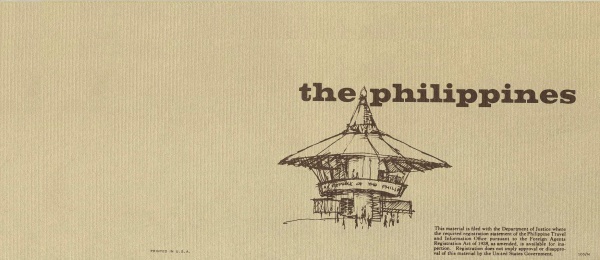
|
|